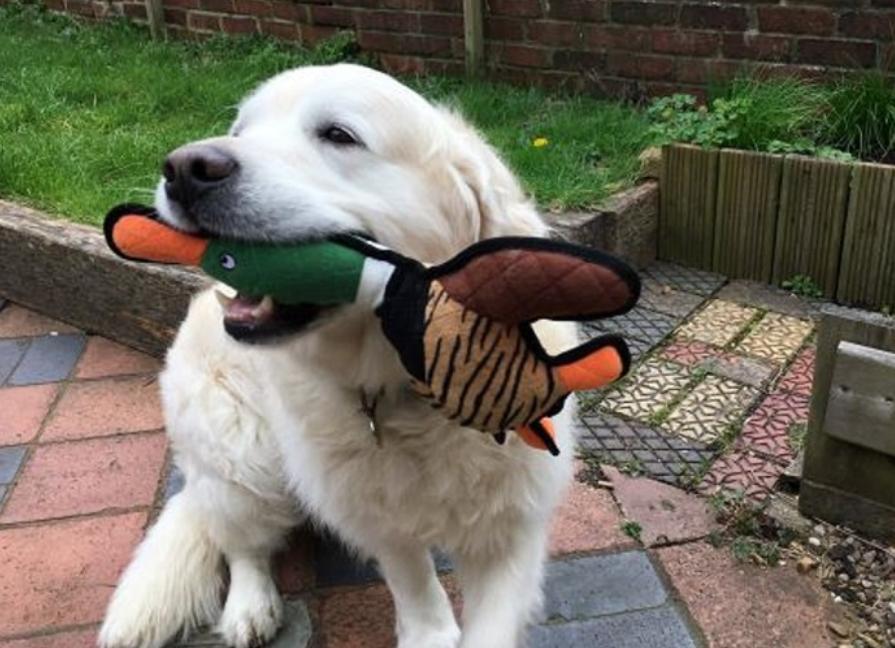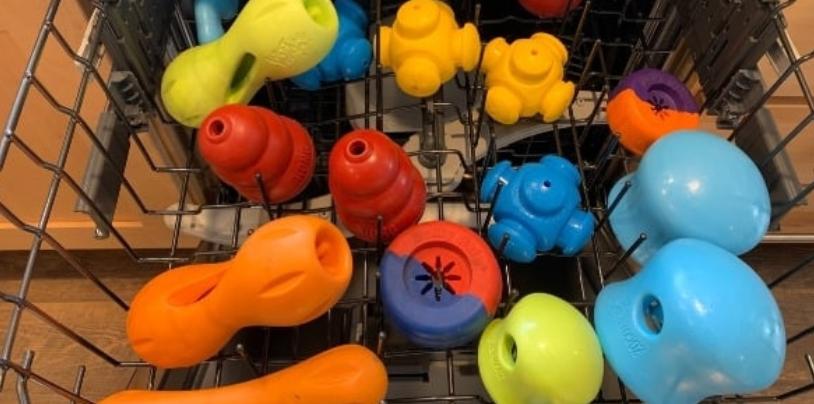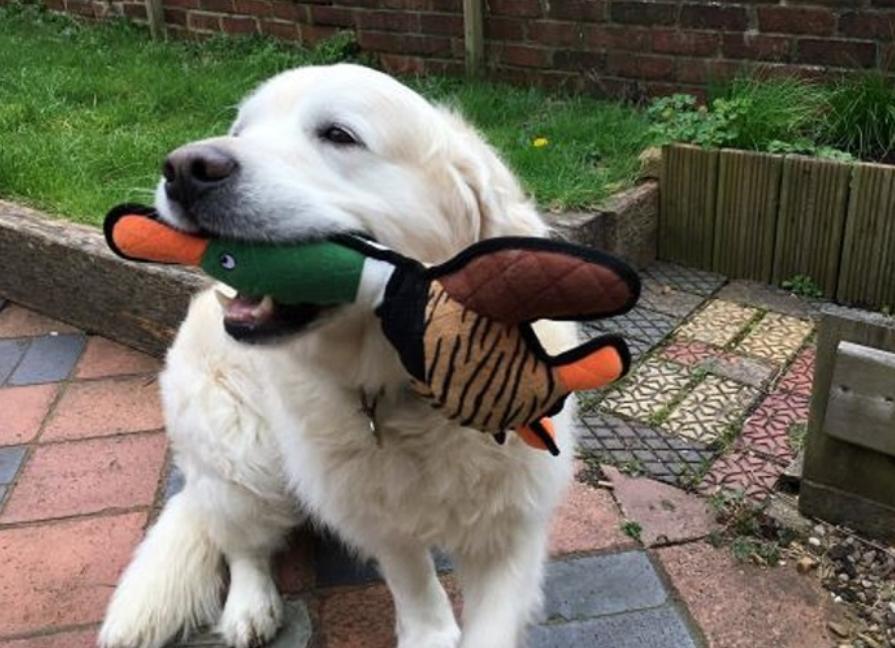Dog toys often end up covered in dirt, saliva, and bacteria after a good play session. Cleaning them regularly helps keep your pet’s environment healthy and hygienic. While hand-washing toys is an option, using a washing machine can save you time and effort. However, not all dog toys can be tossed in the washer. Certain toys may suffer damage or lose their functionality if not cleaned properly. In this guide, we’ll show you how to wash dog toys in washer safely, from identifying machine-washable toys to choosing the best settings and cleaning products. You’ll also learn how to dry the toys effectively to ensure they last longer and stay in great condition for your dog’s playtime.

Can All Dog Toys Be Washed in the Washer?
Before washing your dog’s toys, it’s important to understand which ones can be safely put in the washing machine. Not all toys are suited for the rigors of a machine wash, and some may need a gentler approach.
Identifying Machine-Washable Dog Toys
Not all dog toys are created equal when it comes to washing. Machine-washable toys are often made of durable materials such as rubber, silicone, or thick plush fabric. Check the care label or product packaging for washing instructions. Toys without electronic components or squeakers are typically safe for the washing machine. Hard rubber or plastic toys are generally fine, but delicate fabrics and certain stuffed toys require extra attention.
Recognizing Toys That Should Be Hand-Washed
Some dog toys, especially those with internal squeakers, ropes, or small attached parts, may be damaged in the washer. Hand washing is recommended for these toys, as it helps maintain their structure and functionality. Toys made from delicate fabrics or those with sentimental value should also be cleaned manually to avoid unnecessary wear and tear.
What Settings Should You Use for Washing Dog Toys?
Choosing the right washer settings is key to ensuring your dog’s toys are thoroughly cleaned without being damaged. By adjusting the water temperature and wash cycle, you can extend the life of the toys while maintaining their cleanliness.
When washing dog toys, always consider the material. For plush toys, use cold water to avoid shrinking or damaging the fabric. For rubber or hard toys, warm water works well to eliminate germs and bacteria. Avoid hot water, as it can warp plastic toys or degrade rubber over time. The gentle cycle is your go-to for dog toys, especially those made from soft materials. For sturdier toys like rubber or hard plastic, a normal cycle can be effective. Be cautious with aggressive spin cycles that might cause harm to softer toys. Use mild, fragrance-free detergents when washing dog toys. Avoid bleach, fabric softeners, or strong chemicals, as they may leave harmful residues. Natural or pet-safe detergents are a safer alternative to keep your dog’s toys clean and toxin-free.
Step-by-Step Guide to Washing Dog Toys in the Washer
Now that you know which toys can go in the washer and the best settings to use, it’s time to go through the washing process step-by-step. This guide will help ensure your dog’s toys come out looking clean and well-maintained.
Preparing Dog Toys for Washing
Before tossing dog toys in the washer, it’s crucial to give them a quick inspection. Start by looking for any signs of wear and tear. If you notice any loose parts, such as torn fabric, detached eyes or noses on plush toys, or weakened seams, it’s better to either repair the toy before washing or consider discarding it if it’s too damaged. Washing toys in poor condition may worsen the damage, causing small pieces to break off, which can become a choking hazard for your dog later.
Additionally, for toys that are heavily soiled, especially those that have been outside, a pre-rinse can work wonders. Hold the toys under running water to remove mud, sand, or any caked-on dirt. This simple step not only helps in cleaning the toys more effectively but also prevents your washing machine from clogging. If the toys are sticky or greasy, a bit of mild dish soap can be used during the pre-rinse to break down the grime. This ensures your washer can focus on sanitizing and thoroughly cleaning the toy during the actual wash cycle.
Using Laundry Bags for Extra Protection
When it comes to delicate or smaller dog toys, placing them in a mesh laundry bag is a simple but effective way to offer extra protection. These bags are designed to reduce the impact of the washing machine’s agitation on the toys, preventing them from getting snagged on the machine’s agitator or tumbling too aggressively. Toys, especially plush ones, can lose their shape or develop tears if left unprotected in the wash, and laundry bags minimize this risk.
Moreover, using laundry bags is particularly helpful for toys with small or detachable parts that might come loose during the wash. If the toy has buttons, plastic parts, or embroidery that could wear out, the bag ensures that any loose pieces stay contained within the bag, preventing them from causing further damage to the toy or your washing machine. If you don’t have a mesh bag on hand, a pillowcase can be a good alternative for large plush toys or multiple small ones.
Ensuring Proper Rinsing for Thorough Cleaning
A proper rinse is one of the most critical steps in ensuring that your dog’s toys are completely free from harmful residue. Detergent, even mild ones, can leave traces on the toy’s surface, which your dog might ingest when playing or chewing on the toy. For this reason, it’s important to ensure a thorough rinse after the wash. Most washing machines come with an extra rinse option, and it’s a good idea to make use of this feature when cleaning dog toys.
If your machine doesn’t have this feature, you can manually run a second rinse cycle. It’s especially important for plush toys, which tend to absorb more detergent due to their soft, porous texture. If toys are not rinsed properly, leftover detergent can irritate your dog’s mouth or skin when they come in contact with the toy again. Taking this extra step ensures that the toys are safe for play and free from any potentially harmful residues. For rubber toys, you can also rinse them under clean water after removing them from the washer to be extra cautious.
Best Practices for Drying Dog Toys After Washing
Once your dog’s toys are washed, drying them properly is the next important step. Improper drying can lead to mold growth or damaged materials, so it’s essential to follow best practices for different toy types.
Air drying is the safest option for most dog toys, especially plush toys that could lose shape in a dryer. Hang them in a well-ventilated area to prevent mold or mildew. For rubber or durable plastic toys, machine drying on a low heat setting can be used, but always check the manufacturer’s instructions. Plush toys take longer to air dry, so squeeze out excess water before hanging them. For quicker results, lay them flat on a towel and press down to absorb moisture. Rubber toys can be wiped down with a dry towel and left to air dry or placed in the dryer on a low, no-heat setting.

Conclusion
Washing your dog’s toys in the washer is a simple and effective way to maintain cleanliness and hygiene. If you’re wondering how to wash dog toys in washer, it’s important to know that with proper preparation, correct washer settings, and careful drying, you can extend the life of your dog’s toys while ensuring they remain safe for your pet. Always assess the material of each toy before washing to avoid damage, and choose gentle, pet-safe detergents to protect your dog’s health.
FAQ
For any lingering questions you might have about cleaning dog toys in the washer, here are answers to some of the most common concerns.
Can Plush Dog Toys Go in the Washing Machine?
Yes, many plush dog toys can be machine washed, but it’s important to use cold water and a gentle cycle. Placing them in a mesh laundry bag helps protect them during the wash.
Is It Safe to Use Detergents for Dog Toys?
Yes, but stick to mild, fragrance-free, or pet-safe detergents. Harsh chemicals and strong fragrances can leave harmful residues on the toys, which your dog might ingest.
How Often Should You Wash Dog Toys?
Washing dog toys once every few weeks is usually sufficient, but you may need to clean them more frequently if your dog plays with them outside or shares them with other pets.

